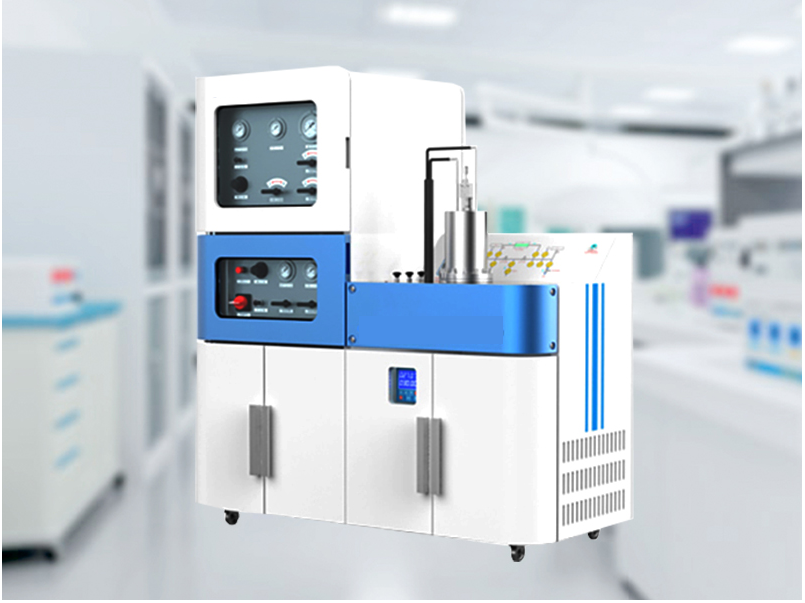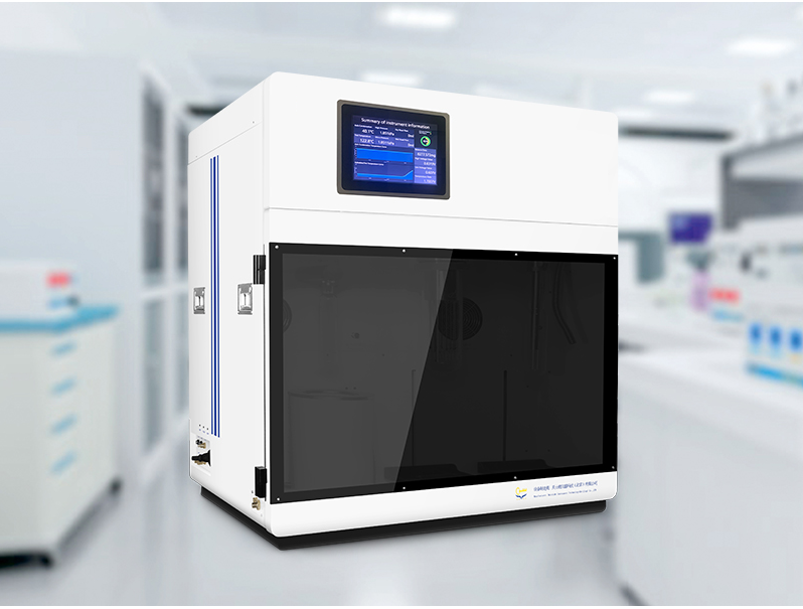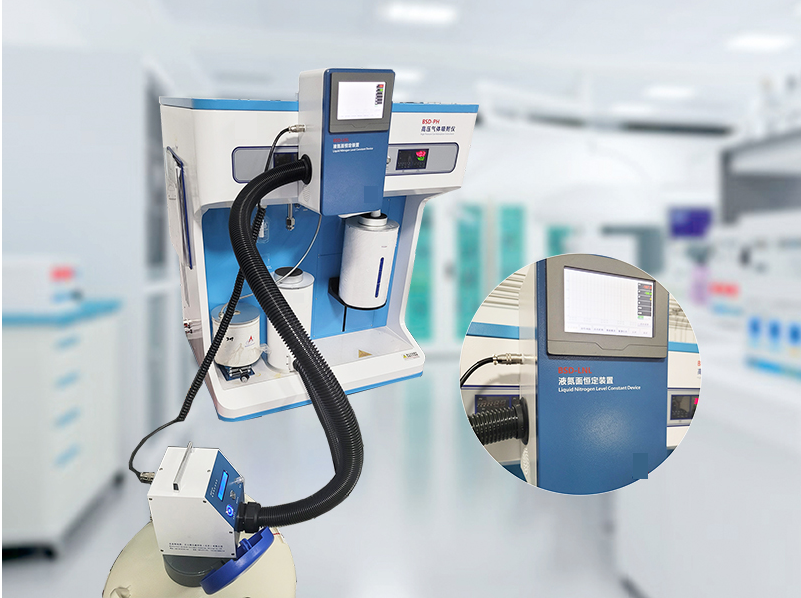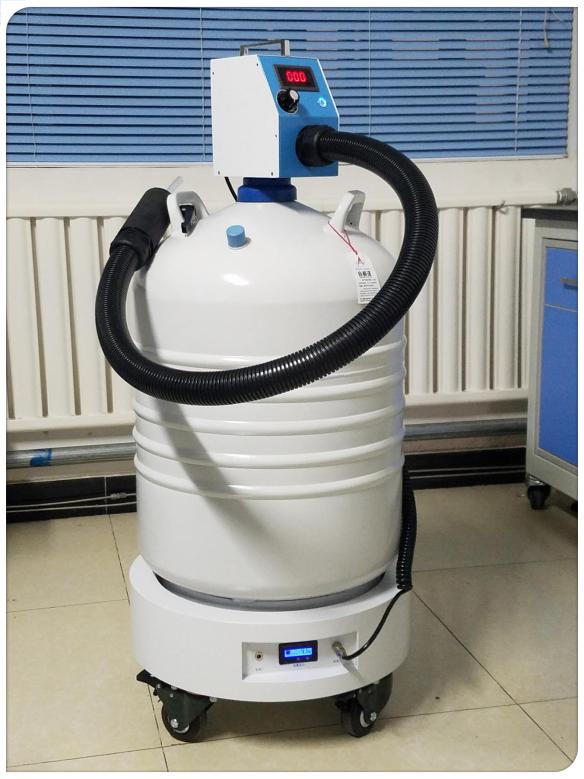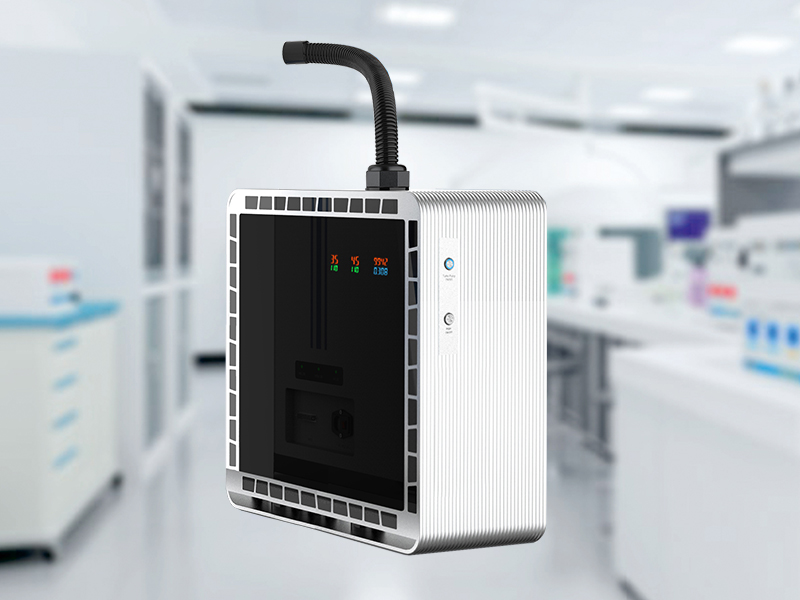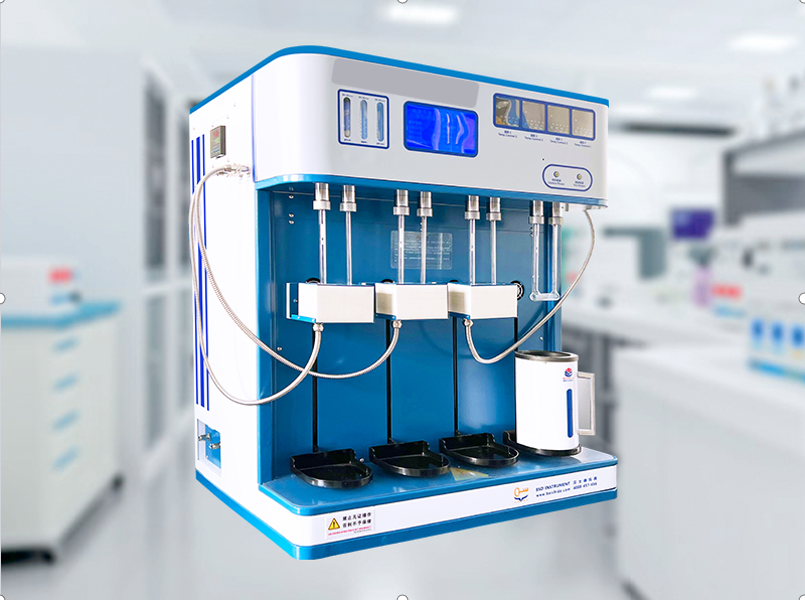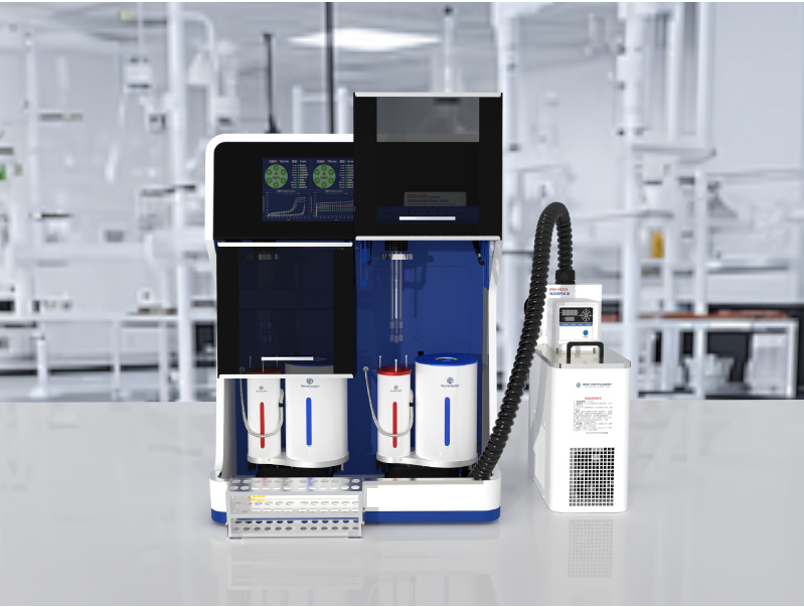STD-VVS&DVS Series Vacuum & Dynamic Vapor/Gas Sorption Analyzer

Main Function
◆ Dynamic Vapor Sorption Isotherm (DVS);
◆ Temperature-Programmed Reduction (TPR) by Dynamic Gravimetric Method;
◆ Dynamic Vapor Isobaric Adsorption/Desorption Rate (DVS);
◆ Dynamic Gas Sorption Isotherm (DGS);
◆ Evaluation of Multi-component Competitive Adsorption by Dynamic Gravimetric Method;
◆ Dynamic Gas Isobaric Adsorption/Desorption Rate (DGS);
◆ Upgradable for adsorption of corrosive vapors/gases (e.g., SO2, H2S, NH3, etc.)
◆ Temperature-Programmed Desorption (TPD) by Dynamic Gravimetric Method
Report Content
◆ Vacuum Degassing Thermogravimetric Report
◆ Adsorption/Desorption Isotherm
◆ Adsorption/Desorption Rate
Performance Parameters
Performance Parameters
| Testing Function | Details |
|---|---|
| Adsorption Performance Testing | Adsorption/desorption isotherm, adsorption kinetics, etc. |
| Isobaric Adsorption Kinetics Analysis | Isobaric adsorption/desorption rate |
| Number of Analysis Positions | Optional 4 or 8 analysis positions |
| Multi-position Simultaneous Analysis | Significantly improves testing efficiency and accelerates research progress, addressing the slow rate and low efficiency of gravimetric isobaric adsorption testing. |
| Uniform Analysis Environment | Allows for detection of subtle adsorption performance differences in materials from the same batch. |
| Resolution/Range | Imported industrial microbalance: 1ug/5000mg (0.1ug/500mg optional) |
| Range increased by 2-5 times compared to similar products, broadening sample loading range, enhancing sampling representativeness, and improving accuracy. | |
| Test Gas Types | Water vapor, organic vapor, CO2, alkanes/olefins, and other non-corrosive gases |
| Optional Corrosive Gas Adsorbates | Yes (e.g., NH3, SO2) |
| Fully Automatic Cyclic Adsorption Test (Recommended) | Fully automatic constant pressure and variable temperature adsorption/desorption |
| Fully automatic constant temperature and variable pressure adsorption/desorption | |
| Fully automatic variable temperature and variable pressure adsorption/desorption | |
| Fully automatic cyclic adsorption/desorption lifetime evaluation | |
| Degassing Furnace and Constant Temperature Bath Switching Mode (Recommended) | Fully automatic switching |
| Specifically for fully automatic cyclic adsorption lifetime evaluation | |
| Adsorption Test Temperature | Constant temperature bath: -5℃~150℃, precision ±0.1℃ |
| Vapor Anti-condensation | Full constant temperature gas path system: room temperature~60℃, precision 0.1℃ |
| Vapor Generation Method | "Carrier gas mixing" flow method |
| Vapor "Humidity/Partial Pressure" Control Range | 2%~98% P/P0, lower P/P0 optional |
| Reagent Tube Liquid Reagent Capacity | 120ml |
| Patented technology for saturated condensate recovery of reagents, improving reagent utilization and reducing consumption. | |
| Degassing Activation Pretreatment | Atmospheric purge degassing |
| Room temperature~300℃, precision ±0.1℃ | |
| Visual Programmed Temperature Degassing | Degassing temperature control mode: multi-stage programmed temperature rise to prevent overheating, protect samples, and prevent sample flying. |
| Real-time visualization of sample constant weight process to accurately determine if degassing is complete. | |
| Buoyancy Correction | Mode 1: Buoyancy calculation mode (default) |
| Mode 2: Blank position buoyancy background subtraction mode | |
| Mode 3: Background subtraction curve mode | |
| Blank Position Synchronous Testing | Supports blank position as background and buoyancy subtraction synchronous testing |
| Eliminates system errors and significantly improves testing accuracy and stability | |
| Mass Flow Controller | Imported high-precision mass flow controller (MFC) |
| Enables precise control of gas and vapor concentrations |
Data Report

Difference
The distinction between "gravimetric method" and "volumetric method" instruments
| Key Indicators | Gravimetric Method | Volumetric Method |
|---|---|---|
| Quantitative Approach | Determines adsorption amount by weighing the weight change before and after adsorption. | Calculates adsorption amount based on pressure change within a certain volume before and after adsorption using the "ideal gas law". Also known as the "volumetric method". |
| Core Quantitative Component | Microbalance | Pressure Sensor |
| Precision Comparison | Weight sensors are typically 1-2 orders of magnitude more precise than pressure sensors. | The highest precision of pressure sensors is 0.1% of the reading, but relatively lower than that of microbalances. |
| Main Adsorbate Types | Organic vapors, water vapor, gases. | Gases (Suitable for gas quantification due to narrow quantitative range and larger errors for vapors deviating significantly from ideal gases). |
| Adsorption Kinetics Analysis | Yes | No |
| Details | Obtainable data on adsorption rate under constant pressure. Enables kinetic analysis of gas and vapor adsorption, water activity analysis, etc. | Unable to obtain data on adsorption rate under constant pressure. Only provides variable-pressure adsorption rate curves. |
| Degassing Pretreatment | Obtain "thermogravimetric" curves of temperature, weight, and time during degassing pretreatment. Accurately determine if the sample has constant weight and is "clean". | Degassing time is set empirically. It is unknown whether the sample is "clean". (Generally, degassing time is maximized under allowable conditions, reducing efficiency to ensure degassing effect.) |
| Temperature Zone Testing | No | Yes |
| Details | Direct weighing, quantification is independent of temperature zones, with minimal error factors. | Requires knowing the "remaining" gas amount in each temperature zone to determine the sample's adsorption amount. Introduces more error sources. |
The difference between "vacuum method" and "dynamic method" in weight based steam adsorption instruments:
| Key Indicators | Vacuum Method | Dynamic Method |
|---|---|---|
| Method Overview | Adsorbent sample is placed in a vacuum environment. Adsorbate vapor volatilizes into the vacuum system under controlled partial pressure (P/P₀). Time-weight data is continuously recorded until adsorption equilibrium is reached. Also called "static method" as adsorbate vapor is static during adsorption. Ideal for physical adsorption analysis with high data reliability. No carrier gas interference. Technically advanced method developed later than dynamic method. | Adsorbent sample is placed in a normobaric environment with flowing carrier gas. A mixture of carrier gas and adsorbate vapor flows over the sample. Time-weight data is continuously recorded until adsorption equilibrium. Also called "dynamic method" due to flowing adsorbate vapor. Early method developed from simple "balance +恒温恒湿箱" setups. Requires no vacuum system, simpler construction, widely adopted historically. |
| Sample Pretreatment | Vacuum Degassing (High Efficiency) | Atmospheric Purging (Low Efficiency) |
| - Removes surface impurities (e.g., moisture, air) via heating + vacuum pumping. | - Removes impurities via heating + dry carrier gas purging. | |
| - Effective for high-surface-area samples (microporous materials, molecular sieves, activated carbon). | - Limited effectiveness for removing impurities in micropores. | |
| - Pretreatment temperature up to 400℃, no secondary contamination. | - Maximum pretreatment temperature ≈200℃. | |
| - Clean sample surface ensures accurate test data. | - Risk of sample loss during vacuum oven drying (no anti-blowout mechanism). | |
| - Sample re-exposure to air during transfer compromises pretreatment effectiveness. | ||
| Vapor Introduction Method | - After vacuum degassing, sample chamber is evacuated. Adsorbate vaporizes from liquid reagent into the chamber and adsorbs onto the sample. | - Sample is under normobaric conditions. Carrier gas carries adsorbate vapor dynamically over the sample. |
| - P/P₀ control via precise vapor pressure regulation. | - P/P₀ control via carrier gas/vapor ratio adjustment. | |
| Partial Pressure Control | - Precision: Error <0.1% | - Precision: Error ≈1% |
| - Range: 0–99% | - Range: 2–90% |
Leave Message Get Price



